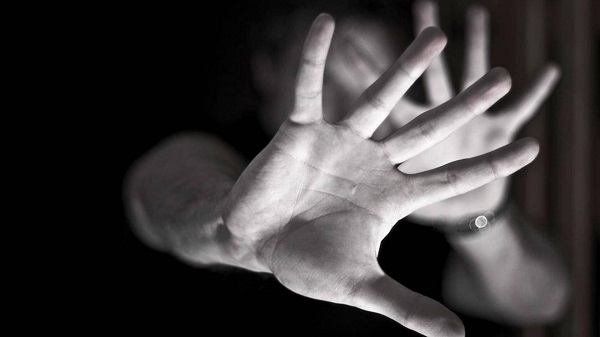Types of violence and their causes and consequences. Violence is a very broad concept that encompasses not only aggressive physical behaviors, as is commonly thought but also humiliation towards the other person, ridicule, insults, threats, etc.
That is why there is not a single type of violence, but several. In this article, we will know the 10 most important types of violence, according to two parameters. The type of demonstration and the scope of application. We will see what each one consists of, and analyze its causes and consequences.
Types of violence, its causes, and effects
Depending on how violence manifests, as well as its presentation and typology characteristics, we find 6 major types of violence:
1. Physical violence
Physical violence is what is exerted on the body of another person. The causes can be varied: low tolerance for frustration, aggressive personality, strong arguments, poor self-control, substance abuse (alcohol, drugs …), behavioral disorders, personality disorders, etc.
The consequences are pain towards the other person, as well as damage or risk of producing it. Physical violence endangers the physical integrity of the person on whom it is exercised. These are, for example, blows, kicks, pushes, etc.
2. Psychological violence
The second of the types of violence, psychological violence, consists of forms of verbal aggression; these translate into actions, insults, behaviors, threats, humiliations, manipulation, isolation, discredit, etc. It causes emotional damage to the person receiving such violence, as well as a disturbance in their personal development and / or self-esteem.
The causes vary: it can occur in profiles of abusers, for example, or in people who at any given time lose control, or who have acquired the habit of speaking badly to the other person through insults, etc. The short and long term consequences for those who receive this type of violence include psychological traumas, posttraumatic stress disorder (PTSD), insecurities, severe discomfort, anxiety, depression, etc.
3. Sexual violence
Sexual violence encompasses those actions that violate the other person’s right to voluntarily decide whether or not to perform a sexual act. This type of violence can be with or without genital access and can include sexual assault, sexual abuse, and rape. It translates into forcing the victim to perform some kind of sexual behavior, such as fellatio, intercourse, etc.
It is usually accompanied by threats and physical, verbal or psychological violence. Sexual violence also includes threats, intimidation, etc., and can occur between unknown persons or between people who know each other (included in a couple’s relationship or in a marriage).
On the other hand, sexual violence also includes cases of forced prostitution, slavery, exploitation and sex trafficking. The causes vary greatly, they can occur in people with some type of mental disorder, but also in “healthy” people (without the mental disorder); They are usually multifactorial causes. The consequences of sexual violence for the victim include psychological trauma (for example PTSD), anxiety, depression, addictions, etc.
4. Economic and economic violence
The next type of violence is economic and patrimonial. It is violence aimed at causing a deterioration in the economic or patrimonial resources of another person. It is used through the possession of the other person’s assets, their removal, destruction, retention, etc.
Economic violence applies to both economic and physical assets (tangible) as well as personal documents, property rights, etc. The causes are multifactorial; this type of violence may appear in relationships “for convenience”, in toxic relationships, in the context of other types of violence, in criminals, etc. The consequences for those who receive this type of violence include evictions, economic ruin, etc., and its consequent consequences: malaise, depression, etc.
5. Symbolic violence
Symbolic violence is executed through stereotypes, messages, values, signs, symbols, etc. that are of inequality and that promote discrimination of the person. They tend to subordinate or belittle the value of the other person within society.
Thus, it is usually a type of violence that women especially suffer. The causes, as in all cases, also vary greatly, and are related to other forms of violence, to the inheritance of a macho culture, etc.
6. Gender violence
Gender violence consists of a type of violence (physical, psychological …) that is exercised against any person (or group of people) because of a certain sexual orientation, sexual identity, sex or gender. However, this terminology is also used to refer to violence against women, due to its high prevalence in society worldwide.
The causes of gender violence “in general” are related to difference intolerance, prejudices… and those of gender violence against women is related to machismo, fundamentally.
Classification according to the area where it is applied
We have seen the different types of violence according to their different forms of manifestation; Now we are going to see the 4 types of violence according to the area where it is applied:
1. Domestic violence
Domestic or intra-family violence is the one that a member of the family group exercises on another family member (for example, their partner); The requirement to consider it as such is that they have lived together previously (or at present). Family group means a relationship of the couple, marriage, kinship (affinity or consanguinity), etc. It can happen anywhere, it doesn’t have to be home.
The consequences imply damage to the dignity of the person, their physical integrity, their well-being, etc., and it translates into psychological, sexual and / or physical violence. Thus, it can include attacks of all kinds. Domestic violence is often associated with violence against women because it is the one that occurs most frequently, but in reality, by domestic violence, we understand violence against men and women.
2. Institutional violence
It is a type of violence used by professionals, officials, agents of any public body or institution, etc. Which aims to impede, delay or prevent certain people from having access to their rights under the law, as well as public politics. It also occurs more frequently against women, according to statistics. The causes are based on prejudices, stereotypes, a patriarchal culture, etc.
3. Work violence
Labor violence is one that discriminates against men or women in the fields of public or private work. The consequences are obstacles and difficulties for these people to access employment, promotion, hiring, permanence in the workplace, etc.
An example of workplace violence is the inequality of wages between men and women (the so-called “wage gap”) for the benefit of men. Another example would be the systematic psychological abuse that can be done to a worker in order to leave the company (mobbing or workplace harassment).
4. Media violence
Media violence involves the publication or dissemination of stereotyped images or messages through some mass media. The consequences include promoting the exploitation of men or women and their images; These people end up receiving insults, discrimination, defamation, humiliation, etc., for the content of these images or messages.
In the case of media violence against women, the cause is still machismo (as in most cases of violence against women).

